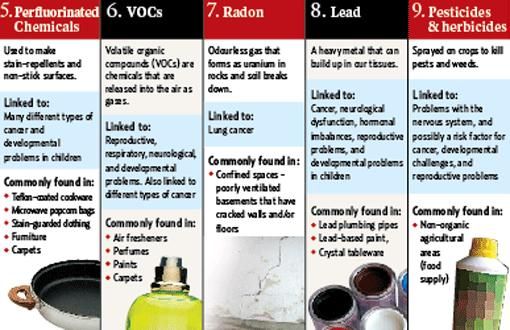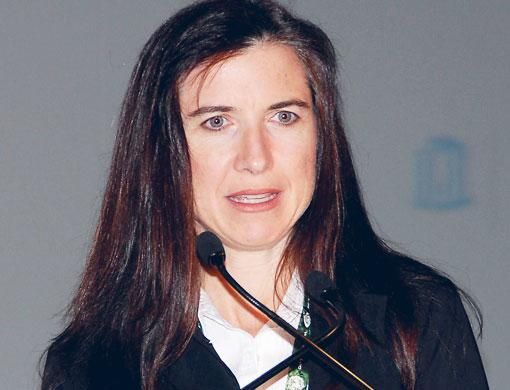Abu Dhabi: A random check will be done across 600 homes to test the level of indoor air pollution in homes across the UAE, Gulf News learns.
As part of the Environment Agency - Abu Dhabi (EAD) strategy plan, 12 teams each comprising three people (including a nurse and a nutritionist) will be conducting an epidemiological study across 600 homes for a period of ten weeks starting from October 2010.
In the next few weeks, however, a pilot project will be conducted in ten homes across Abu Dhabi to test the procedure.
"Our team members will be committed to sampling homes for a good two to three hours, five days a week for ten weeks; each team will cover 60 homes and results of the study are expected to come out by March 2010," said Aysha Abu Shahab, Environmental Coordinator for the Environmental Management Sector at EAD.
"The whole idea of this study is to gather as much facts as possible about lifestyle habits across the UAE," said Abu Shahab. Approximately 60 per cent of the homes sampled will be in Abu Dhabi and Al Ain as an initial step, said Abu Shahab, adding that the first draft of results for the pilot project is expected not later than June 2009.
"Pilot project findings and environmental evidence will help environmental agencies across the UAE revise the strategy plan once again."
Jacqueline Macdonald, who is leading the National Environmental Health Strategy Project for the UAE with a team of experts from the Gillings School of Global Public Health, University of North Carolina, told Gulf News: "The purpose of the pilot study is to make sure our equipment works properly before we sample check the other 600 homes. We're basically going to collect samples of indoor air to assess health effects and contamination at a household level, some of which includes tobacco smoking, cooking and use of pesticides indoors."
The $12-million (Dh44 million) initiative includes indoor as well as outdoor assessment of air pollution across the UAE, taking into account 14 different types of environmental risks.
On the second day of the International Conference on Environmental Health 2009 Douglas Dockery, School of Public Health at Harvard University, urged environmental agencies to continue focusing on reducing air pollution.
Abu Dhabi An international team of scientists hired by the Environment Agency - Abu Dhabi (EAD) is helping the UAE develop a national strategy and action plan for environmental health.
The Gillings School of Public Health at the University of North Carolina (UNC) at Chapel Hill is leading the research.
The team has developed preliminary estimates of the environmental burden of disease in the UAE, using data available at the beginning of this study.
Those estimates indicate that between 5 per cent and 38 per cent of premature deaths may be from environmental causes. Ambient air pollution appears to be the leading risk.
The team is gathering additional field data and constructing computer simulation models to produce updated estimates of the burden of disease for several of the leading risks.
The team has conducted five workshops at which a wide range of experts ranked the relative importance of the 14 environmental risks being studied.
An analysis of the workshop participants' views showed that the five risks of most concern were ambient air pollution, indoor air pollution and occupational exposures in industry, construction and agriculture. The strategic planning process focuses on human health risks caused by exposure to harmful substances in air, water, soil, or food.
Those substances include physical agents (such as particles and noise), biological agents (such as harmful bacteria), and chemicals (such as petroleum hydrocarbons, metals, and radon).
The risks resulting from hazardous waste sites are listed under the estimates of risks of exposure to contaminants in water, soil, and air, since exposure to such wastes occurs through release to those environmental media. (The request for proposal had indicated hazardous waste sites as a risk factor.)
In addition to the 14 risks, there are additional concerns like rodents and other potential disease vectors and radiation hazards.
The research team decided not to address vector-borne diseases and radiation hazards (except for radon) because of lack of evidence that such exposure or anticipated health effects are present in the UAE.
1. Aira. Ambient air pollution
b. Indoor air pollution
2. Occupational exposures
a. Agriculture
b. Industry
c. Construction
3. Water
a. Drinking water
b. Exposure to recreational coastal water
4. Soil
a. Exposure to residential soil
5. Food
a. Eating contaminated seafood
b. Eating contaminated fruits and vegetables
6. Other routes
a. Electronic fields
b. Ambient noise
c. Global climate change
d. Stratospheric ozone depletion
Source: The National Strategy and Action Plan for Environmental health in the UAE Hazards Environmental Risks
Are you aware of these pollutants? What do you do to minimise the amount of pollution in your home?
Your comments
In many parts of Sharjah and Dubai there are no underground ditch facilities and they are using trucks to pump and dispose the waste water. It is a huge health hazard as there is a bad smell coming during this process which is due to the pollution on the air by gases. I hope the authorities pay more attention to such air pollution and make alternate arrangements at the earliest.
Raja
Sharjah,UAE
Posted: March 19, 2009, 10:23
-cleaning of AC and vacuuming the duct since hvac system absorbed and recirculated those particles.
-verify and check exhaust and ventilating system if working, and must be specified according to standard application/requirement.
-majority of flats/villas are not aware about air quality.
Regino Doroin
Abu Dhabi,UAE
Posted: March 19, 2009, 10:22
With the increasing cases of cardiovascular diseases, this initiative deserves attention by launching massive informative campaigns about the hazards of seemingly harmless household items.
Meo Pen
Abu Dhabi,UAE
Posted: March 19, 2009, 08:32
Pollutants are present all around us. People try to keep their house clean and dust free. To clean the house and bathrooms, we all use detergents, cleaners etc. containing harmful chemicals which we are all unaware about. Whitening liquids and detergents for clothes and surfaces are also harmful but in certain cases unavoidable. The air is polluted, especially in areas where construction is going on and in roadside apartments. Fruits and vegetables are sprayed with pesticides and coated in wax to increase shelf life. I have personally purchased apples from the market and with the help of a sharp knife pared it to see wax peeling off. There might be many other food products which contain chemicals or harmful ingredients. Information where certain issues could be truly life threatening could be disclosed to the public. Awareness to a certain extent would be helpful. Going too deep in to such matters and too much awareness could create unnecessary fear and would mar our day to day existence.
Naina Nair
Sharjah,UAE
Posted: March 19, 2009, 07:15















